Beavers Build Ecosystems Of Resilience
17:21 minutes
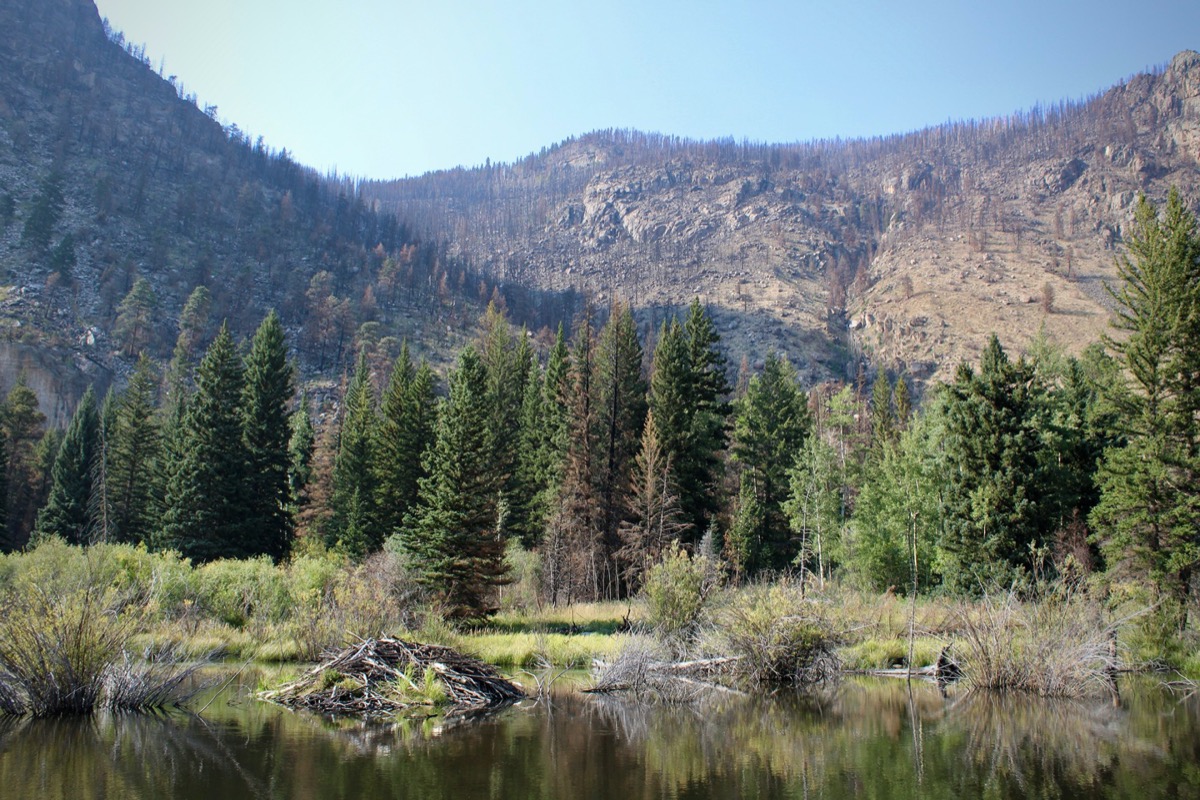
 This article is part of The State of Science, a series featuring science stories from public radio stations across the United States. This story by Alex Hager originally appeared on KUNC on September 23, 2021.
This article is part of The State of Science, a series featuring science stories from public radio stations across the United States. This story by Alex Hager originally appeared on KUNC on September 23, 2021.
Deep in the Cameron Peak burn scar, nestled among charred hills, there’s an oasis of green—an idyllic patch of trickling streams that wind through a lush grass field. Apart from a few scorched branches on the periphery, it’s hard to tell that this particular spot was in the middle of Colorado’s largest-ever wildfire just a year ago.
This wetland was spared thanks to the work of beavers.
The mammals, quite famously, dam up streams to make ponds and a sprawling network of channels. Beavers are clumsy on land, but talented swimmers; so the web of pools and canals lets them find safety anywhere within the meadow.
On a recent visit to that patch of preserved land in Poudre Canyon, ecohydrologist Emily Fairfax emphasized the size of the beavers’ canal network.
“Oh my gosh, I can’t even count them,” she said. “It’s a lot. There’s at least 10 ponds up here that are large enough to see in satellite images. And then between all those ponds is just an absolute spiderweb of canals, many of which are too small for me to see until I’m here on the ground.”
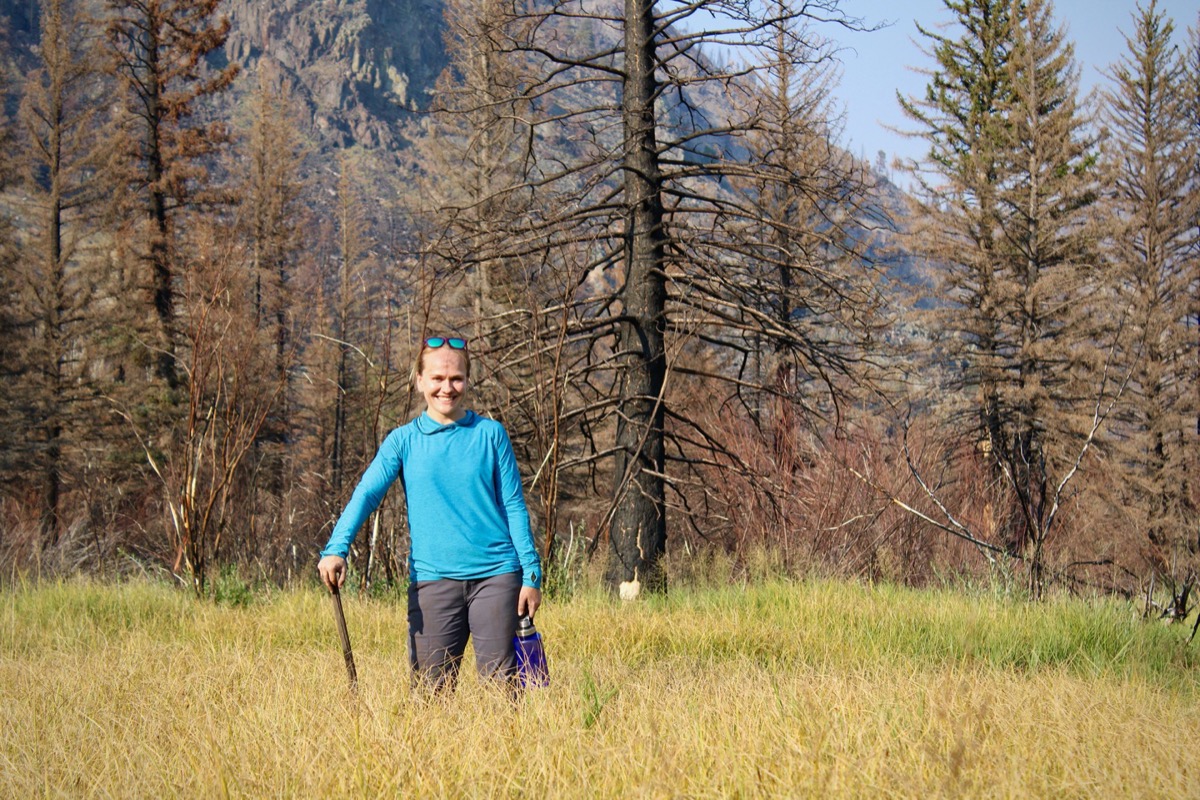
The very infrastructure that gives beavers safety from predators also helps shield them from wildfire. Their work saturates the ground, creating an abnormally wet patch in the middle of an otherwise dry area. Dams allow the water to pool, and the channels spread it out over a wide swath of valley floor.
Fairfax researches how beavers re-shape the landscapes where they live. Across the West, she’s seen beaver-created wetlands survive wildfires.
“When you’re at this beaver complex,” she said, “it never stops being green. Everything else in the landscape—the hill slopes on either side, they both charred. They lost all their vegetation during this fire. But this spot, it did not. These plants were here last year and they’re still here today.”
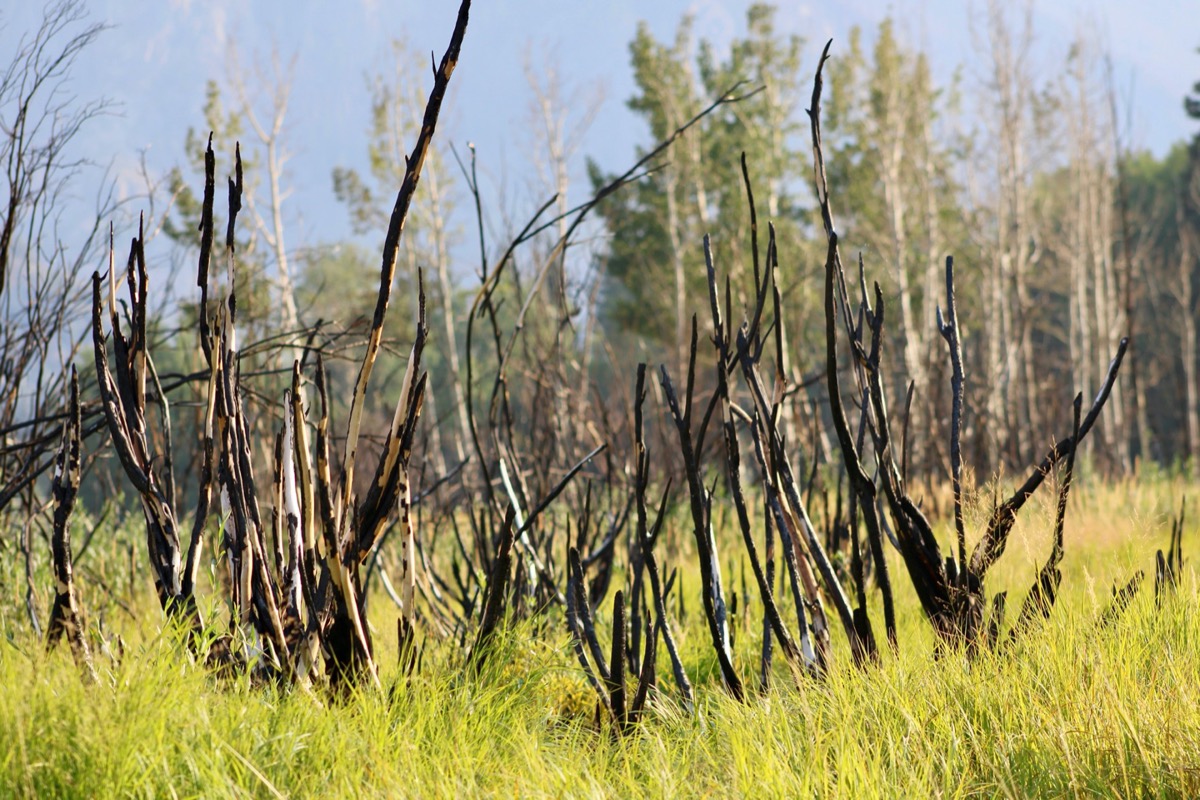
Fairfax stands in the middle of a vibrant meadow, with golden-green grass up to her knees. She points to a row of trees about 100 feet away, where the trunks have clearly been singed, but brown needles still cling to branches—a sign of “moderately intense” burning. Just another 100 feet past that, another row of trees has been scorched completely black and free of needles—a telltale indicator of “high intensity” burning.
That gradient, Fairfax said, shows just how effectively the wet beaver meadow held back the fire. These saturated wetlands also serve as a kind of reservoir, slowing down the release of mountain runoff on its way to the places where humans divert and collect it.
“It’s mimicking this critical function that used to be pervasive in these riverscapes,” said Joe Wheaton, a fluvial geomorphologist at Utah State University. “And is that a similar function to what snowpack does or the inefficient movement of water and that leads to healthier riverscapes.”
Just like snow, beaver wetlands hold water for gradual release. That will likely get more important as climate change drives warmer temperatures and less snowfall, making high-mountain water storage even more valuable.
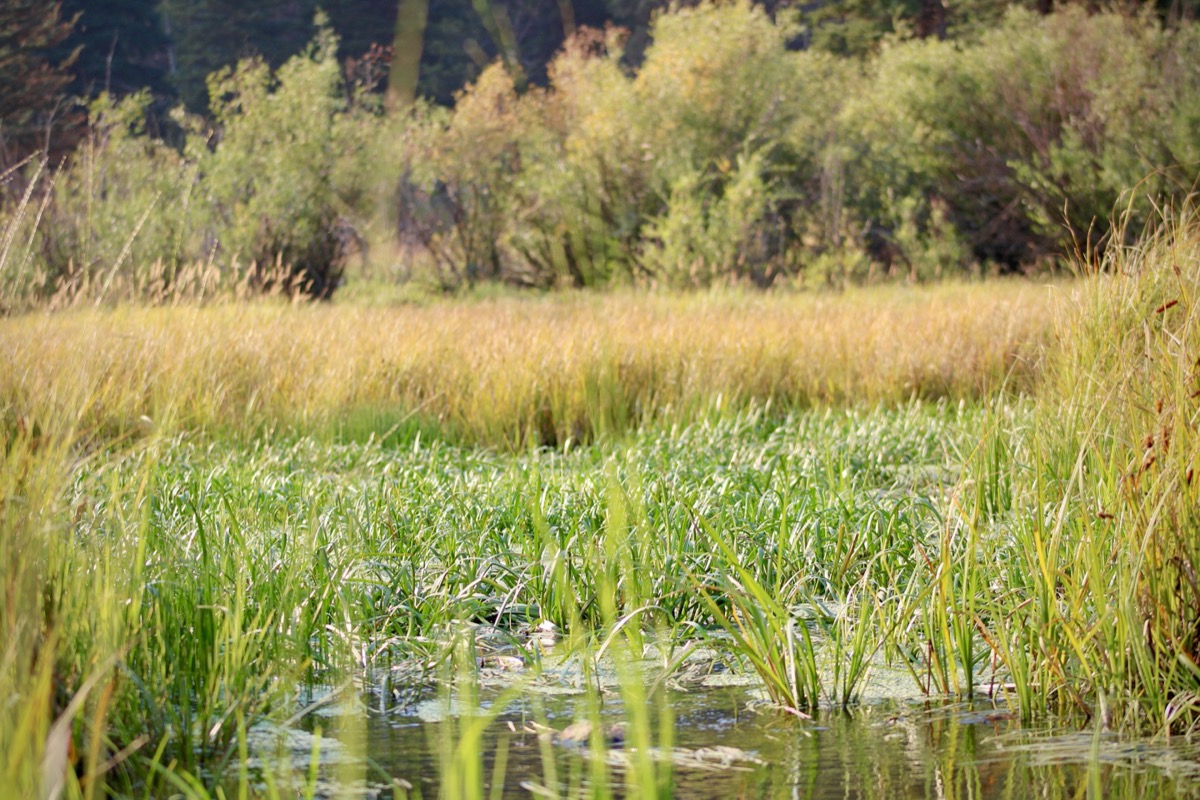
The wetland storage system can be bigger than it looks, since more than 80% of the water in beaver complexes is actually underground. But in the grand scheme of things, Wheaton said those systems don’t store that much water.
“Beaver are not going to be the miracle answer,” he said. “You’re not going to create more water at that sort of scale.”
While it won’t make a difference for water managers looking at water from a basin-wide perspective, people are noticing significant changes on a small scale—like when an upstream beaver dam lets a rancher get water a bit longer into the season during a drought year.
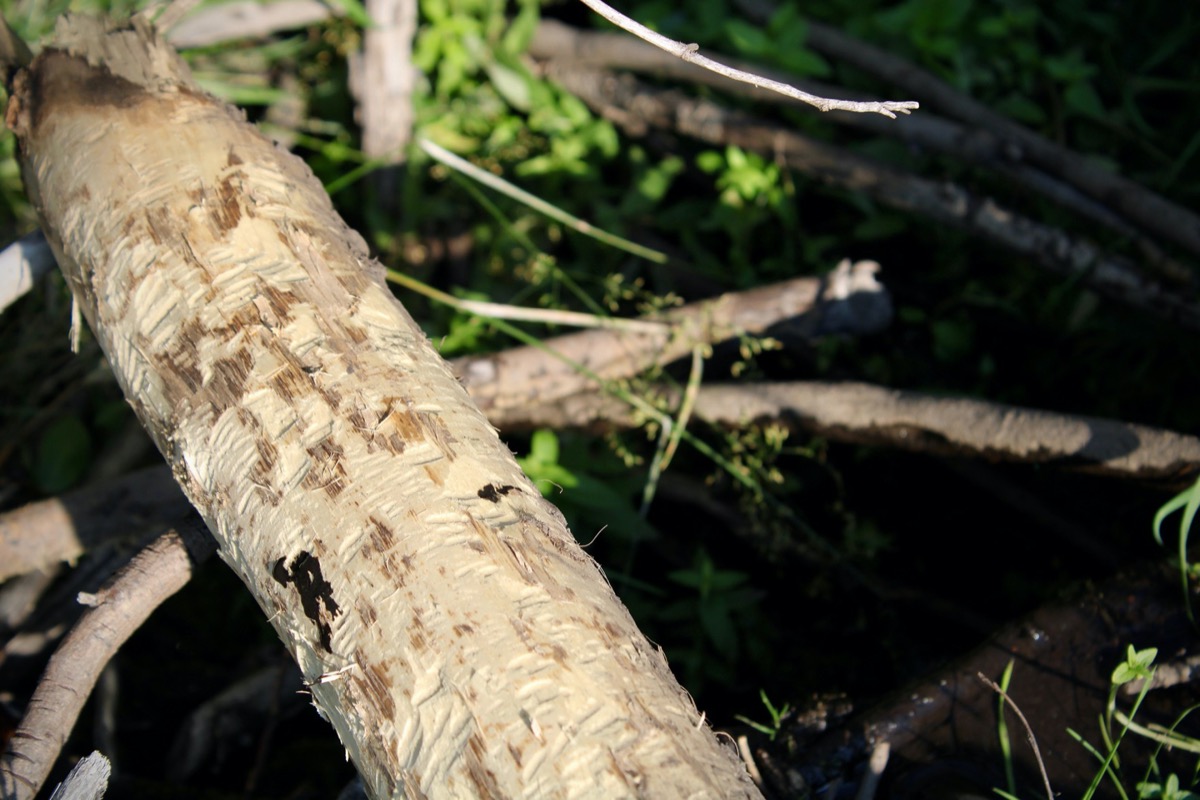
That isn’t lost on humans, who have tried to reap the benefits of beaver wetlands by creating their own. A budding world of “beaver dam analogs” has seen the strategic creation of human-built dams in an effort to help slow the release of water.
Projects across the West have seen some success, but largely have not been as effective as the real thing.
“The beaver complex and the beaver wetland is so much more than the dam,” Fairfax said. “It’s the channels, it’s the digging, it’s the chewing, it’s the constantly changing the landscape, the dynamics, the flexibility.”
Beavers have millions of years of practice repairing dams and shaping rivers, and that makes them capable water managers.
Fairfax did see a beaver complex serve as a fire break one time in Colorado, but she said it’ll take far more research before we can figure out how effective they are when it comes to slowing down wildfires on a large scale. But for now, these areas are surviving as oases of green in big fires all across the West.
This story is part of ongoing coverage of the Colorado River basin, produced by KUNC in northern Colorado, and supported by the Walton Family Foundation. KUNC is solely responsible for its editorial content.
Alex Hager is KUNC’s Water in the West reporter and is based in Fort Collins, Colorado.
Emily Fairfax is an assistant professor of environmental science at California State University Channel Islands in Ventura, California.
IRA FLATOW: This is Science Friday. I’m Ira Flatow. And now it’s time to check in on the state of science.
SPEAKER 1: This is Kate [INAUDIBLE].
SPEAKER 2: For WWNO.
SPEAKER 3: St. Louis Public Radio.
SPEAKER 4: [INAUDIBLE] News.
SPEAKER 5: Iowa Public Radio News.
IRA FLATOW: Local science stories of national significance. Last year’s Cameron Peak fire was the largest wildfire on record in Colorado. More than 200,000 acres of land burned. While so much of the forest in the path of the fire did burn something interesting happened in a few areas. The land was untouched by the flames. Still green, still wet. How did that happen?
Well there’s one thing that these areas have in common. They were home to nature’s wetland engineers, beavers. Joining me today to talk about how these charismatic rodents saved some Colorado spots from wildfires is my guest, Alex Hager, reporter for KUNC Public Radio.
He covers Water in the West. He’s based in Fort Collins, Colorado. Welcome to Science Friday.
ALEX HAGER: Thanks for having me, Ira.
IRA FLATOW: Nice to have you. Give us an idea, Alex, of how large the area where the fires did burn and was protected by the beavers.
ALEX HAGER: Well the area that was protected was actually pretty big. And the way that these beaver complexes work is that the beavers create a big network of channels. They are not great runners, but they are great swimmers, so to protect themselves they have this network, this complex, of ponds and little canals that they can swim through.
And so because of that it spreads out the water and actually creates a pretty big area of green. And it’s kind of wet and muddy. So I was out there wandering around with researcher, Emily Fairfax, within this burn scar. This was only one of a few areas. There were 27 distinct patches of area that were not burned by the fire or that were burned very little.
In total that adds up to about 267 acres. So in the grand scheme of things not huge. It’s about 1/10 of 1% of the total land of the fire but if you’re standing on the ground it feels pretty big.
IRA FLATOW: Wow. I know it’s been a year since the Cameron Peak fire. What does the area look like now? Is everything what you’d expect it to look like, all burnt down?
ALEX HAGER: A whole lot of it is. I mean, this area of the Padre Canyon near Fort Collins it’s been scarred by wildfires before. There was another big one back in 2012. And so as you drive along the river into this Canyon you see what is referred to usually as a mosaic burn pattern. So some of it is just sort of regular, dry area. It’s got your sage and conifers that you imagine out in the West.
And some of these areas have burned just a little bit where the trees are still around but you can see that they’ve lost some of their needles or they’re sort of blackened area on the trunks. Some of them are a lot more burned where they’ve lost all of their needles but there’s maybe a little bit of vegetation left.
And some of it was the product of severe burning where all that’s left are these toothpicks, these blackened husks of trees, and the dirt is just totally gray. It looks like moon dust because it’s so ashy and burned out.
And in the Canyon you can see the results of some mudslides where that loose soil gave way, and rain washed away houses, and took lives, even. But there are some patches of green along the river where it was close enough to water that the fire didn’t burn those areas. And then there are bigger patches where beavers spread out the water and created a wetland and stopped the fire from burning.
IRA FLATOW: So in these patches where the beaver were successful, are these case studies that people can use to see what techniques are working to keep the fires from spreading?
ALEX HAGER: Yeah. And that’s the important thing to note here is that this is not happening on a massively significant scale. These beaver wetlands, like I said, they’re these striking oases of green. But they are oases. They’re sort of islands in the middle of this burned area.
And so it’s not stopping or slowing down the fire in any significant capacity but it’s a really interesting study in how effectively these singular areas can survive, in Colorado and across the West. And, you know, this is not the end of big wildfires in Colorado. Climate change is making them more frequent, more severe, and to see these little dots surviving, I think, warrants a little bit more research.
IRA FLATOW: Yeah. I know that you’re a water reporter. So talk to me about the important role wetlands are playing in Colorado’s ecology.
ALEX HAGER: Well they play a really interesting role in drought, which we’ve been hearing a lot about recently. For a little bit of background here, when we’re talking about water in the west a lot of it comes from winter precipitation. So you’ve got rain and snow falling high up in the mountains and the availability of water has a lot to do with the way that water makes it down from the mountains into the streams, and rivers, and the places where humans kind of divert and collect it.
And so to have more water, the best way to do that a lot of times is to slow it down, is to keep it up in the mountains. And so sometimes that’s happening in human made reservoirs. Sometimes that’s happening in naturally occurring kind of lakes and ponds.
Sometimes it’s occurring just in cold frozen snow. But as it’s getting hotter that snow is kind of melting earlier. It’s melting quicker. And so it’s more important to have natural ways for water to be stored up there and one way to do that is put it behind beaver dams.
If you’re noticing a thread here, climate change is making that more important as the years go on. And like fire there’s not a massively significant difference in terms of how much water is being stored but I talked to one fella who told me quite a bit about this.
This is Joe Wheaton from Utah State University. He has the very cool title of Fluvial Geomorphologist. He studies the flow and formation of rivers. He had this to say.
JOE WHEATON: Beaver are not going to be the miracle answer. You’re not going to create more water at that sort of scale. We have to come to grips with our overuse and the fact that the timing of this stuff is diminishing.
ALEX HAGER: And Wheaton told me that where that really makes a difference is on a small scale. And he added this.
JOE WHEATON: Now if I’m a rancher and I have a bunch of these little streams and rivers, those actually make up like 90% of the drainage network of the Colorado basin. All these littler creeks, the sort of thing that you could walk across.
ALEX HAGER: So because of that, these little rivers and streams near ranchers and farmers, they are a testing ground for what are called beaver dam analogs, which is kind of exactly what it sounds like. Humans trying to build things that look like beaver dams. They’re trying to replicate what they look like, how they act, and the effects of storing some of that water.
But the really interesting thing is, I’ve talk to researchers about this, is that they are not as effective as the real thing. Beavers have millions of years of evolution that make them really good engineers. They know how to fix these things. They know how to maintain them and humans just can’t do it the same way.
IRA FLATOW: And they’ve got much better tails than we do.
ALEX HAGER: Yes. Thank you, Alex. Great story. Alex Hager, reporter for KUNC Public Radio, covering Water in the West based in Fort Collins, Colorado. The impact of beavers on the environment is not limited to Colorado. I mean, beavers live pretty much everywhere in the US, right? And with climate change making wildfire season more intense and longer we’re watching these creative carpenters to learn their tricks of the trade.
Dr. Emily Fairfax, assistant professor of environmental science at California State University Channel Islands in Ventura, California, is a bona fide beaver expert and enthusiast. And she’s going to tell us everything we ever wanted to know about beavers. Welcome to Science Friday.
EMILY FAIRFAX: Thank you. I’m super happy to be here.
IRA FLATOW: Nice to have you. Let’s start off by walking me through exactly what beavers do to the environment that makes their habitats so resistant to wildfires.
EMILY FAIRFAX: Yeah. So when a beaver moves into the landscape, a lot of the times the stream it’s moving into is in a sort of a degraded state, especially in the American West. It’s really thin. It’s not got a lot of vegetation around it. And that does not suit the beaver.
So what it does is it builds a dam and then it expands that dam over and over. Then it builds more dams. And then it digs these little canals out from its pond into the landscape in this huge sort of spider web of water. And it’s doing all of this because it is great in the water.
It’s an excellent swimmer and very awkward on land so the more water they have the better. And while that’s great for the beaver, what it means is that water is being slowed down and spread out throughout the whole landscape. Basically irrigating it so that all the plants stay green, and lush, and happy, and they don’t really turn into that super dry fire fuel.
IRA FLATOW: So if you really wanted to spread the water out into a large area you just leave it to the beavers to do it.
EMILY FAIRFAX: Yeah. Absolutely. They’re the most motivated engineers because their livelihood really depends on it.
IRA FLATOW: And how are the beavers doing? How about their population? Is it healthy?
EMILY FAIRFAX: I mean, it’s definitely better than it was. So before the European North American fur trade there were 100 to 400 million beavers in North America. They were literally everywhere. And then the fur trade absolutely decimated their population down into the hundreds of thousands.
It was really touch and go for a while for beavers. Today it’s rebounded to maybe 10 to 30 million beavers in North America. So huge gains from their low point. But we’re still nowhere near like a fully beavered North American continent.
IRA FLATOW: Yeah. We talked about how beavers in Colorado helped some areas survive the Cameron Peak fire damage. But of course this must not be a unique case, right? I mean, earlier this year in Sacramento beavers were let loose on a dry floodplain and they restored it. Is that right?
EMILY FAIRFAX: Yeah. They are– I love that case. They’re the only engineers that come in ahead of schedule and under budget. They work really hard to get these landscapes into this super resilient state and they do it throughout the country. I mean, I’ve seen this happen in essentially every single Western State over and over and over again.
Cameron Peak was not an anomaly. Beavers are really experts at making climate resistant landscape patches.
IRA FLATOW: I mean, so how difficult is it to bring the beaver in and to get them to working? To beaver or not to beaver, that is the question. How many beaver do you need to make this work?
EMILY FAIRFAX: That’s a great question and it’s one we don’t have a perfect answer to. We have seen instances where a single beaver pond that’s probably just being maintained by one family persists through a fire. It’s fine during droughts and floods and everything else.
But the more beavers the better, in general. It’s hard to get them to be where you want because in some parts of the West you can’t move beavers. So in California it’s against the law to physically move a Beaver from one site to another.
So how do you get them to be where you want? Well you just kind of have to entice them by building BDAs, which are beaver dam analogs or fake beaver dams that they come and fix up, or starting stream restoration on your own and just crossing your fingers and hoping.
There’s other states where you can relocate beavers from conflict areas where maybe they’re not getting along with their human neighbors into more wild areas where they can exist a little more peacefully. But relocation is not a silver bullet. Those beavers don’t always make it when you move them and it’s better to let them sort of choose the landscape and then coexist with them.
IRA FLATOW: How easy is it to move the beaver? I mean, can you just literally pick them up, a certain number, and drop them down by a helicopter or something like that?
EMILY FAIRFAX: I love that you asked about helicopter because back in the 40s that’s literally what they did they. Well, not helicopters but airplanes. There are these great videos online of parachuting beavers. They did it in Idaho. They did it in California.
There’s great videos of it from Idaho where they packed beavers up into boxes with parachutes attached and actually push them out of an airplane. We don’t move them that way anymore. They’re not super easy to move.
When you relocate a beaver you do have to take their whole family with them. And that’s mom beaver, dad beaver, all the baby beavers, and like teenage beavers that are living at home. And then you have to move them the right time of the year because they’re not going to hibernate in the winter.
But they do need to have a bunch of food stored so If you move them at the wrong time they might not have enough food at their new site to make it through the winter.
IRA FLATOW: You said the 1940s. What were they doing with beaver back in the 40s?
EMILY FAIRFAX: That’s a great question. They were moving them out of conflict areas in Idaho and putting them into the wilderness where they were going to be able to sort of expand and make those streams healthier again.
IRA FLATOW: Now you mentioned artificial beaver dams. Are these as effective as the real beaver dams?
EMILY FAIRFAX: They’re not as effective as real beaver dams. They are definitely effective. You can get a lot of gains from building a beaver dam analog but when a beaver moves into the landscape it’s a lot more than just the dam itself.
The Beaver is out there in the riparian zone or the Creekside ecosystem, chewing on trees and sort of thinning the brush. It’s digging these canals. It’s maintaining that beaver dam. It’s making sure it’s not leaking too much.
And so they’re putting in a lot of maintenance time and effort that if we just build a BDA and leave it we’re not going to get that same sort of quality of work.
IRA FLATOW: This is Science Friday from WNYC Studios talking with Dr. Emily Fairfax, who is from Cal State University Channel Islands in Ventura, California, about the beavers. I mean, this is just fascinating stuff. Is this a new idea?
I mean, we certainly could not have discovered how well beaver make dams and control the wetlands. I mean, the Indigenous people have been around here a lot longer than we have.
EMILY FAIRFAX: Yes. And they definitely were well aware of the importance of beaver. The Indigenous people have co-existed very productively with beaver for thousands and thousands of years before the fur trade crashed their population. And what the cool science that’s coming out now is really doing is it’s just putting new numbers on ideas that are very old and very well known by certain people.
IRA FLATOW: Realistically, how much could we scale up beaver habitats? I mean, is this a possible solution to the wildfire problem here in the US? As we know, it’s getting to be worse.
EMILY FAIRFAX: Yeah. We could scale it up a lot. And there are so many streams, especially in national forests and on BLM land, where there’s not going to be conflict with people. And it’s a place where beavers used to live and they no longer live because they’ve been trapped out way back in the day.
And those are the perfect places to scale up beavers and beaver restoration. Like, bring in the beavers. Those landscapes are fire prone. They need more wetlands. They need more healthy riparian zones and the beavers can do that with very, very few downsides.
IRA FLATOW: But what do you need a change in the law? Like you said, there are some states that forbid you to move the beaver.
EMILY FAIRFAX: In some places you would need a change in laws and policies. I think in a lot of places you need just a lot more public outreach and education. People don’t always remember that beavers are part of these landscapes. They’ve been gone for so long.
And when a beaver moves in it’s really a dramatic change. Like they change the landscape. And that can be startling and kind of nervous for a lot of people to see it changing so fast and so out of their control.
And so I think there’s a huge role for academics, and scientists, and nonprofits, and everybody else to just learn about what beavers do and don’t do so when a beaver moves in it’s not quite such a scary thing.
IRA FLATOW: OK. If we have any listeners who live near a degraded stream, because we have very motivated listeners, or a wetland habitat who are listening to this and think, hey, my area could use a beaver family. Is this a good thing to do on your own?
EMILY FAIRFAX: No. This is not something to do on your own. Definitely work with a wildlife professional. If for no other reason then you shouldn’t handle wildlife.
I mean, beavers are living organisms. They are trying to survive. They are big. An adult beaver could be anywhere from 40 to 100 pounds depending on where you are.
IRA FLATOW: Wow.
EMILY FAIRFAX: Right? You could–
IRA FLATOW: Wow.
EMILY FAIRFAX: I don’t know if I’d want to find a Beaver. Like that’s a large creature. They’re very passive. They don’t bite and fight a lot unless they’re really being threatened but it’s not easy to move them.
It’s not easy to know where to put them. And if you really want them to succeed, there’s a lot of things to take into consideration about how you catch them and then how you decide where to ultimately place them in the landscape.
IRA FLATOW: Tell me the states, or a state, let’s just use one if it’s helpful, that is a particularly good example of beaver restoration.
EMILY FAIRFAX: A good example of Beaver restoration. I would say it’s probably a tie between Washington and Oregon right now. Washington is definitely a leader when it comes to beaver relocation and they’ve done a huge amount of research on how to successfully take beavers out of high conflict situations and move them into places where they’re going to thrive.
And I know that they’ve partnered a lot with the tribes up there and it’s just been a really great collaboration. Oregon has sort of taken the lead with some of the beaver dam analog projects and utilizing beavers and beaver based restoration to support other species like salmon.
IRA FLATOW: That’s terrific. You’ve told us everything we’ve wanted to know and more about beavers and how if we want to get the job done we should leave it to beavers.
EMILY FAIRFAX: Absolutely. They’re there for us.
IRA FLATOW: Thank you very much, Emily.
EMILY FAIRFAX: Yeah. This was great. It was a lot of fun. You asked really good questions.
IRA FLATOW: Dr. Emily Fairfax, assistant professor of environmental science at California State University Channel Islands in Ventura. A bona fide Beaver expert and enthusiast.
Copyright © 2021 Science Friday Initiative. All rights reserved. Science Friday transcripts are produced on a tight deadline by 3Play Media. Fidelity to the original aired/published audio or video file might vary, and text might be updated or amended in the future. For the authoritative record of Science Friday’s programming, please visit the original aired/published recording. For terms of use and more information, visit our policies pages at http://www.sciencefriday.com/about/policies/
Kathleen Davis is a producer and fill-in host at Science Friday, which means she spends her weeks researching, writing, editing, and sometimes talking into a microphone. She’s always eager to talk about freshwater lakes and Coney Island diners.
Ira Flatow is the founder and host of Science Friday. His green thumb has revived many an office plant at death’s door.